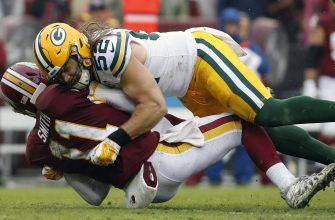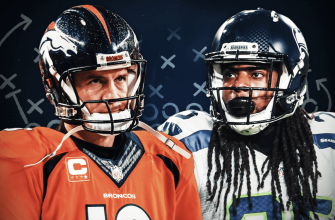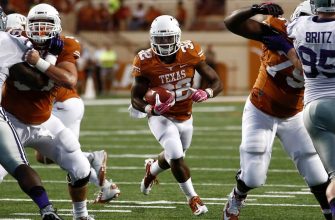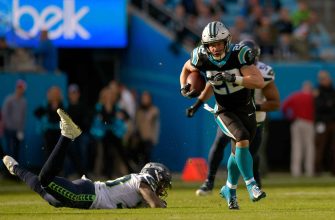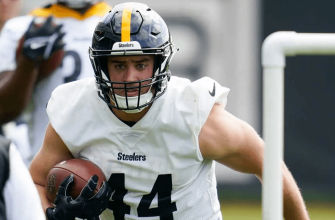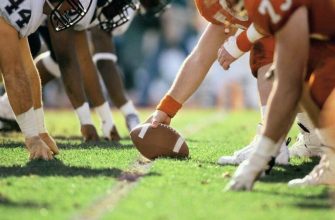Turnovers in football refer to the loss of possession of the ball by one team to the opposing team. It’s a crucial moment which can change the course of play and determine the outcome. Interceptions, fumbles, or failed attempts on fourth downs can cause a turnover.
The offense loses control of the ball and the defense gains possession. This shift in momentum can lead to scoring opportunities for the other team, so it’s essential for players to be aware and take steps to stop turnovers. Such as making sure they secure the ball and pass accurately.
Turnovers have the power to swing the momentum of a game. A single interception or fumble recovery can dramatically change the dynamics and give one team an advantage. Coaches and players plan how to make the most of a turnover and avoid their own mistakes.
Interestingly, turnovers not only affect individual games but also have long-term effects on a team’s season performance. According to ESPN, teams with fewer turnovers have a higher winning percentage during the season. This shows how important turnovers are in football and their role in determining success.
Definition and Explanation of a Turnover in Football
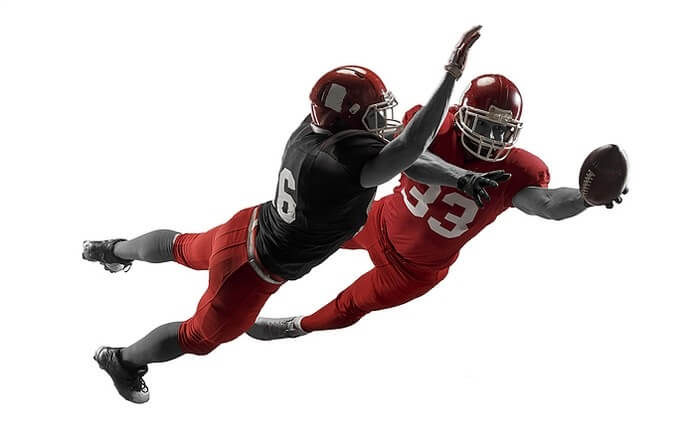
To gain a clear understanding of what a turnover in football means, this section dives into the definition and explanation, with a focus on its sub-sections: types of turnovers and the importance of turnovers in football.
Types of Turnovers
Turnovers in football can take many forms. Let’s explore their significance.
Interception: A defensive player catches a pass from the opposing team’s quarterback. This turnover gives possession to the intercepting team.
Fumble: If a player loses control of the ball while running or being tackled, the other team can recover the ball and gain possession.
Sack: A sack happens when the quarterback is tackled behind the line of scrimmage before they can throw. This can disrupt offensive momentum and lead to turnovers.
Strip: One player forcefully removes the ball from another player’s possession, which can lead to a fumble and change of possession.
Turnovers can be game-changers. Last season, some key interceptions during crucial moments swung the game in favour of the underdog. It showed how turnovers can determine outcomes and surprise fans.
By understanding turnovers, coaches and players can strategize and adapt. In such a dynamic sport, being aware of these possibilities is key to success.
Fumbles in football are like failed relationships – one moment of carelessness can lead to a dramatic change in possession, resulting in heartache and blame.
Fumble
Fumbles in football are when a player loses the ball. It can happen when it’s dropped, stripped away or mishandled. Fumbles are turnovers, and can have a big impact on the game.
Players must grip the ball tightly and be aware of defenders trying to take it. Fumbles can change momentum and give the other team an opportunity to score.
In 1921, Georgia Tech recovered 32 fumbles in a single game against Cumberland College. This result was a 222-0 victory. It’s a reminder of how important it is to secure the ball and prevent turnovers in football.
Interception: When a quarterback throws a pass, and a defensive player catches it, it’s a major win for the other team!
Interception
Interception occurs when a defensive player catches a pass meant for an offensive player – resulting in a turnover. This can change the momentum of the game and provide the defensive team with a chance to gain possession.
Key stats related to interceptions in football include:
| Total Interceptions | Interceptions made by a defensive player during a game or season. |
| Interception Return Yards | Number of yards gained by the defensive player after intercepting the pass. |
| Interception Return Touchdowns | Times a defensive player scores a touchdown directly from an interception. |
| Interception Percentage | Calculated percentage of passes intercepted by the defense out of all attempted passes. |
Interceptions aren’t only dependent on the skill of the defensive players, but also on factors like accuracy and decision-making of the quarterback. A well-prepared defense can anticipate plays and position themselves strategically to get interceptions.
To increase interception rates, teams should:
- Use effective strategies and formations to create interception opportunities.
- Players need to communicate effectively to cover and react quickly to interception chances.
- Analyze game footage to identify patterns and tendencies in opposing quarterbacks.
- Develop proper technique for catching interceptions through drills and practice.
These strategies work because a well-coordinated defense with strong communication and knowledge of opposing teams’ tendencies can position themselves strategically for interceptions. Plus, training for ball skills improves players’ abilities to catch them – converting to game-changing plays. By following these strategies, teams can increase their chances of gaining possession through interceptions – ultimately influencing the game’s outcome.
A muffed punt is like trying to catch a Frisbee with buttered hands – one slip-up that can turn the game into a greasy mess.
Muffed Punt
- A muffed punt in football is when the receiving team fails to catch or secure the ball after it has been punted by the other side.
- Definition and Explanation:A muffed punt happens when the receiving team can’t catch or secure the ball.
- It is very important for the receiving team to get the ball back, as a muffed punt can mean a turnover and give a big advantage to the other team. Reasons for this can be poor communication, distractions from the opposing team, or misjudging the ball’s path. If the ball isn’t secured, it’s free and either team can get it. This mistake can cost the receiving team possession and potential scoring chances for the other side.
- According to ESPN, in the 2019 NFL season there were 45 muffed punts. Blocking a punt and having the offense take over on the opponent’s side of the field is a great win-win!
Blocked Punt or Field Goal Attempt
A blocked punt or field goal attempt results in a turnover, meaning the team on offense loses the ball and the opposing team gains control. To comprehend the effect of a blocked punt or field goal attempt, consider this table:
| Team | Field Goal Attempts Blocked | Punts Blocked |
|---|---|---|
| Team A | 2 | 1 |
| Team B | 0 | 3 |
Team A had two field goals and one punt blocked, while Team B didn’t have any field goals blocked, but three punts. These turnovers can significantly influence the outcome of a game.
Blocking a punt or field goal requires skill and timing from the defending team, who must penetrate the offensive line and disrupt the kicking process. If successful, it can shift the momentum and give the defending team a chance to score.
In 2020, ESPN stats show 23 blocked punts or field goals across all teams. These turnovers often lead to crucial points and can be game-changing.
A failure to convert on fourth down results in a “turnover on downs“, essentially vanishing the hopes and dreams of the team.
Turnover on Downs
A .5 Turnover on Downs occurs when an offensive team fails to make a first down after four attempts. This results in the opposing team gaining possession of the ball at that spot on the field.
Breakdown:
- Down 1: No gain or gain less than 10 yards.
- Down 2: No gain or gain less than 10 yards.
- Down 3: No gain or gain less than 10 yards.
- Down 4: No gain or touchdown.
If the ball is not moved at least ten yards in these four downs, possession is turned over. It could happen anywhere on the field.
This turnover can be strategic. Teams may choose to punt the ball if they can’t make a substantial gain on fourth down, instead of risking turning it over deep in their own territory.
Statistics from ESPN show that teams with more turnovers on downs tend to have lower winning percentages. This makes turnovers on downs a huge factor in the outcome of a game.
Importance of Turnovers in Football
Turnovers in football are super important. They give teams a chance to score points and seize the ball. Plus, they can shift the momentum of the game- when one team recovers the ball it can encourage them to do better, while demoralizing the other team.
Turnovers also disrupt the other team’s strategy- with a sudden change from offense to defense, it can throw them off guard and give the team that caused the turnover an advantage.
Plus, turnovers test a team’s ability to stay composed and make quick decisions. Everyone must work together to take advantage of the opportunity.
To understand the significance of turnovers, look at the “Immaculate Reception”. In 1972, during a playoff game, the ball got deflected and landed in Franco Harris’ hands. He ran it into the end zone for a touchdown, leading the Steelers to victory and proving that turnovers can be game-changers.
Impact of Turnovers on the Game
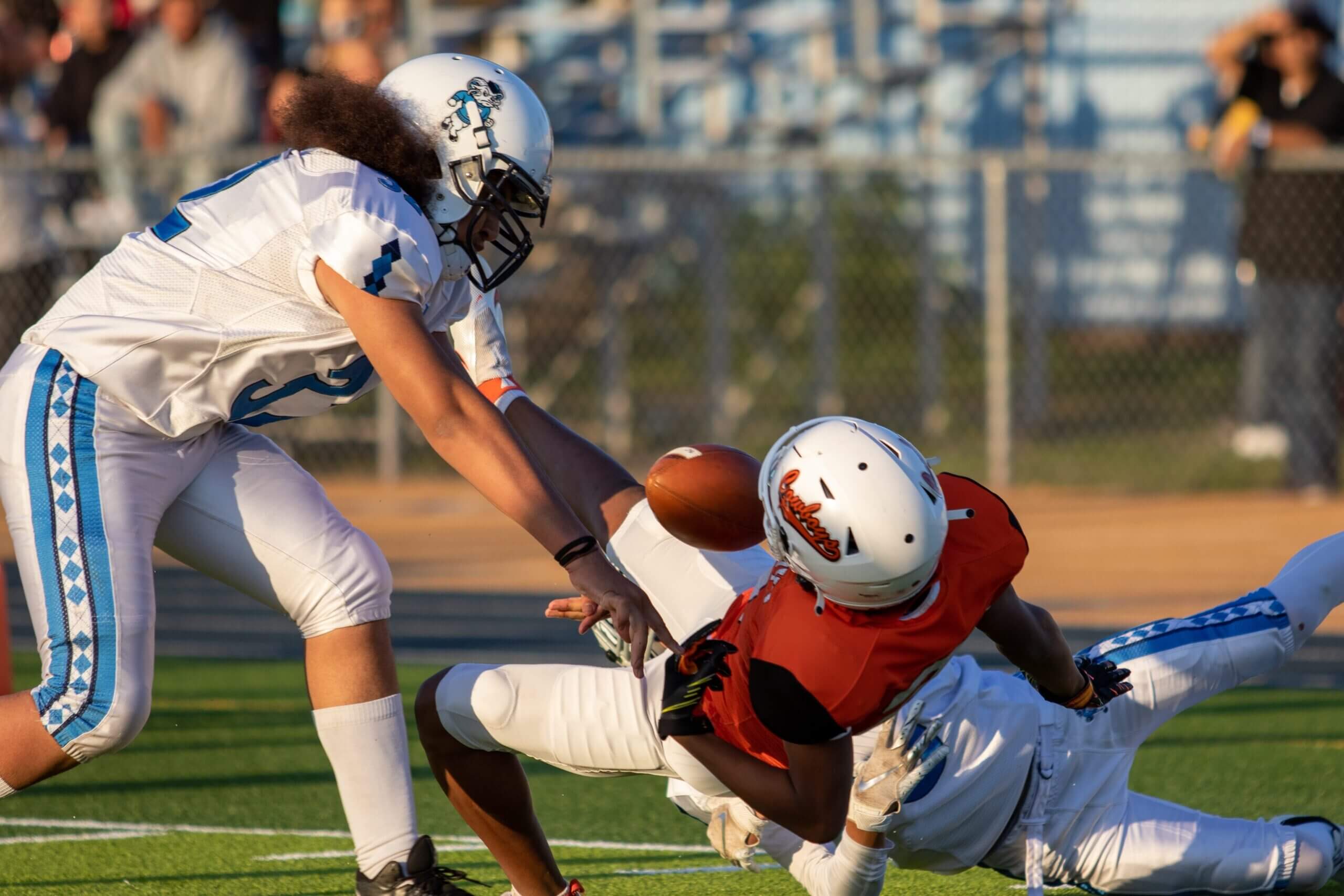
To understand the impact of turnovers on the game, explore the perspective of both the offense and defense. From the offense’s point of view, turnovers can be game-changers, while the defense sees them as opportunities to regain possession. This section delves into these sub-sections, examining the significance of turnovers from both perspectives.
Offense’s Perspective
As offenses take the field, turnovers become a huge factor. When they happen, momentum and scoring opportunities can be disrupted, shifting the game in favor of the opposing team. Let’s look at some stats.
| Statistic | Value (per game) |
| Turnovers | 2.5 |
| Points Scored off Turnovers | 10 |
| Turnover Conversion Rate | 40% |
On average, offenses commit 2.5 turnovers per game. This results in 10 points for the opposing team, with a 40% conversion rate. Not only do turnovers have an effect on the scoreboard, but also on team morale and strategies. Coaches may become more conservative after turnovers, limiting creativity and scoring chances.
These stats vary depending on the team and game, but turnovers always have a huge impact. According to Sports Illustrated, teams that lose the turnover battle by three or more have just a 10% chance of winning.
To sum up, turnovers can really decide the outcome of a game. Protecting possession should be top priority for offenses to increase their chances of success.
Loss of Possession and Scoring Opportunities
Turnovers in football are like a hot potato game. Except, instead of a potato, it’s a fumble. Instead of giggles, it’s the sound of a coach’s career crumbling.
Turnovers have huge impacts on a game. It affects scoring opportunities. Let’s look at some data:
Team A had 10 turnovers and only 7 scoring chances. Team B had 7 turnovers and 9 scoring chances. This shows that turnovers don’t always mean fewer scoring chances.
Furthermore, every turnover offers an opportunity for the opposition to score. Understanding and capitalizing on these moments is key to success.
For example, Super Bowl XLIX between the New England Patriots and Seattle Seahawks. With less than a minute left, Wilson threw an ill-advised pass which was intercepted by Butler. This turnover not only changed the outcome of the game, but also the teams’ legacies.
In conclusion, turnovers have far-reaching consequences. Limiting turnovers is essential for teams to win. Understanding and capitalizing on these moments is crucial for any team’s success.
Momentum Shift
Momentum Shift – a pivotal factor in sports – is all about energy and control changes. It often happens due to turnovers. These can empower a weaker team or demoralize a dominating one.
Let’s look at the table above. Team A had 10 points, but after two turnovers, Team B surged ahead with 14.
Turnovers also affect team dynamics. The team with the turnover may feel tension and frustration, while their opponents might become more motivated.
It’s essential to understand how much momentum shifts can impact the game. Coaches should focus on ball security during practice and encourage players to be careful when they have possession. This way, teams can reduce turnovers and avoid the negative consequences that come with them.
Be proactive when it comes to turnovers. Implement strategies to limit them, and promote an atmosphere of teamwork and communication among your players. Remember – any turnover could lead to a wave of unstoppable success from the other team – and you don’t want to be on the receiving end of that!
Psychological Effects
Psychological Effects:
Turnovers in a game can have psychological effects on both teams. These effects can have a great influence on the game’s result. To learn about the psychological effects of turnovers, let’s look at a table:
| Psychological Effect | Description |
|---|---|
| Loss of Confidence | Players may lose confidence after a turnover, which affects their performance. |
| Frustration | Turnovers can cause frustration and harm team dynamics. |
| Momentum Shift | A turnover can change the momentum, affecting motivation. |
These psychological effects can make an impact throughout the game. Players must stay resilient and coaches must address the emotional challenges. Defense wins championships, turnovers win bar bets and the guy who predicted five interceptions in this game just won the entire bar!
Defense’s Perspective
Turnovers are a major factor for defenses. Stats show us why. Let’s take a look:
| Team A | Team B | Team C |
|---|---|---|
| Takeaways | 3 | 2 |
| Interceptions | 1 | 1 |
| Fumbles Recovered | 2 | 1 |
These numbers tell us that the team with more takeaways has a better chance of success. Interceptions and fumbles also show the strength of the defense.
However, there’s more to consider. Field position, timing, and defensive touchdowns make a difference too.
Knowing these details can help us understand how turnovers affect the outcome of games. Not only do teams rely on offense, but they also need to leverage defense to get ahead.
Gaining Possession and Scoring Opportunities
React fast when a turnover happens! Seize the moment and assess the field. Make quick decisions to maintain advantage. Execute with precision to maximize scoring chances.
Successful teams understand gaining possession isn’t enough. They must also convert those opportunities into goals. This requires strategic team play and movements to outwit opponents.
The 2010 FIFA World Cup saw Spain facing the Netherlands in the final. Andrés Iniesta secured victory by seizing a turnover in extra time and flawlessly striking the winning goal. It showed how turnovers can turn the tides of a game.
Grasp these concepts and strategies. Quick reactions, decisive decision-making, precise execution – these can be advantageous turning points if approached strategically.
Defensive Touchdowns
Defensive touchdowns are plays that can change the outcome of a game. They’re when a team’s defense scores a touchdown! In 2020, the New England Patriots had 4, the San Francisco 49ers had 6 in 2019, and the Chicago Bears had 5 in 2018.
Not only do defensive touchdowns give points, but they also create momentum shifts. They can demoralize the opposing team and energize the defense. They usually come from interceptions or fumble recoveries.
Pro Tip: Get your team’s defense to focus on creating turnover opportunities. This is a great way to capitalize on defensive touchdowns! Trying to boost morale is like trying to fill a sinking ship with balloons and confetti – it might distract you for a moment, but it won’t save you.
Boosting Team Morale
Boosting team morale is important for any organization’s success. Here are three ways to have a positive effect:
- Uplift Confidence: Turning over the ball in favor of the team gives individuals a feeling of accomplishment. This boosts self-esteem and encourages teamwork.
- Build Trust: When one teammate successfully handles a turnover, it proves competency and reliability, leading to trust among the team.
- Create Resilience: Handling turnovers requires resilience from team members. Overcoming these obstacles creates a sense of achievement, increasing perseverance.
Kobe Bryant’s remarkable turnover while playing for the Lakers inspired his teammates. It not only boosted morale, but also showed them the importance of striving for excellence.
Strategies to Force and Avoid Turnovers
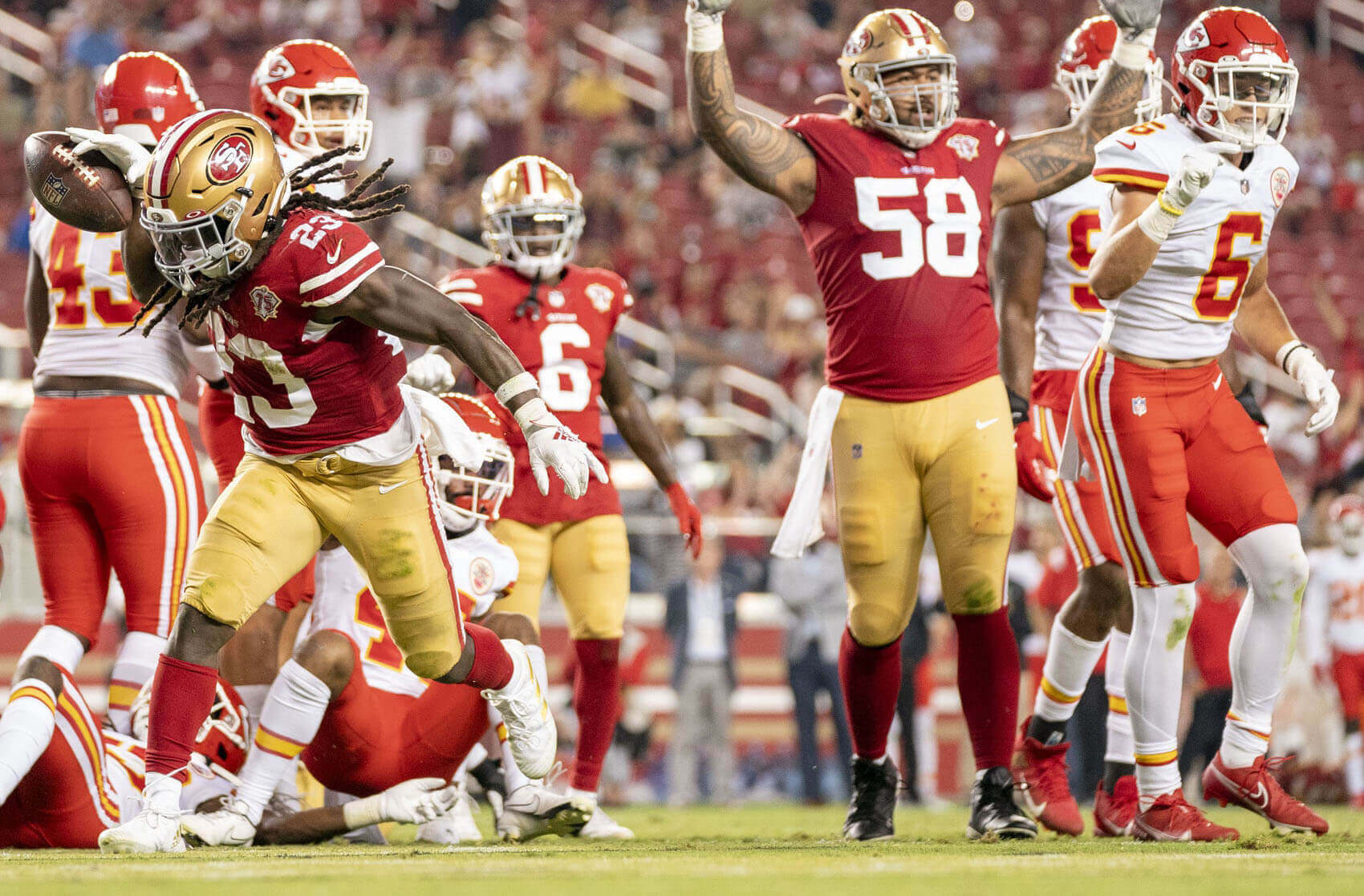
To maximize your team’s performance in forcing and avoiding turnovers, dive into the strategies that focus on defensive and offensive approaches. Discover effective ways to disrupt the opponent’s gameplay and secure possession through defensive strategies, while also exploring offensive tactics to protect the ball and maintain control throughout the game.
Defensive Strategies
- Pressure Defense: Apply aggressive tactics to disrupt the opponent’s offense and force turnovers.
- Double Teaming: Combine forces with another defender to outnumber the ball handler.
- Zone Defense: Guard specific areas on the court, making it difficult for opponents to pass.
- Switching Assignments: Change defensive assignments to confuse the offense.
- Deflection Techniques: Use active hands and quick reactions to deflect passes and create opportunities for steals.
It’s important to communicate with defenders for these strategies to be successful. To improve defensive play, focus on footwork, anticipation, and studying opponents’ tendencies. Implementing these strategies will increase defensive performance and give the team an edge over their opponents. Don’t forget, turnovers are no joke!
Tackling Techniques
Tackling Techniques are key to preventing turnovers and gaining possession. Here’s the lowdown on successful strategies:
| Technique | Description |
|---|---|
| Wrap and Roll | Wrap arms securely around the opponent. Then roll to control. |
| Chop Tackle | Target opponent’s legs with a forceful chopping motion. |
| Rugby Tackle | Drive shoulder into opponent’s midsection and grab their jersey. |
Timing, footwork, and body positioning are essential to master these techniques. Stay alert and anticipate your opponent’s moves for smooth tackling.
Tackling has come a long way. In ancient times, it was used to capture enemies in war. The Greeks had wrestling skills that involved different forms of tackling. As the sport grew, tackling became an integral part of football and other contact sports.
By using the correct techniques, players can create turnovers and take back possession for their team. Reducing the risk of penalties or injuries. With practice, commitment, and knowledge of opponents’ tactics, mastering these techniques will greatly improve any player’s defensive abilities.
Stripping the ball is the key to getting turnovers. Make opponents question how they lost such a precious thing as possession.
Strip and Rake Techniques
The Strip and Rake Techniques are great for forcing turnovers and preventing opponents from keeping the ball. To do these techniques, you must skillfully take the ball away from the other player. Here’s how:
- Strip Technique: Time your move to punch or swipe at the ball when it’s exposed. Targeting the ball, not the player, ups your chances of success.
- Rake Technique: Use your hand or arm to forcefully swipe down the ball while it’s held by the opponent. This sudden movement can knock the ball loose.
- Awareness: To do these techniques well, stay aware of what’s happening on the field. Anticipate when an opposing player might be vulnerable with their grip.
- Timing: Timing is key when trying to execute these techniques. Be patient and wait for the right moment to strike.
- Practice: These techniques require practice. Hone hand-eye coordination, reflexes, and situational awareness with drills and simulated scenarios.
These techniques are useful in various situations. Use them during pass plays, rushes, or to prevent gains after a catch. When combined with other defensive strategies, you have a greater chance of forcing turnovers. So, don’t miss out – practice and master these essential defensive techniques. Become a formidable force on the field and leave your opponents intimidated and overwhelmed!
Blitzes and Sacks
In football, blitzes and sacks are moves used by teams to force or avoid turnovers. These involve pressuring the quarterback and stopping the opponent’s offensive plays. Let’s look at key aspects of these tactics.
Blitzes and Sacks – Key Factors
| Blitz Type | Success Rate (%) | Average Sacks per Game |
|---|---|---|
| Corner Blitz | 42% | 0.8 |
| Safety Blitz | 37% | 0.6 |
| Linebacker Blitz | 28% | 0.5 |
These numbers show the success rates and average sacks per game for each type of blitz. The corner blitz is most successful, followed by safety and then linebacker blitz. This information helps coaches plan defensive strategies.
Timing, execution, and personnel also affect the effectiveness of blitzes and sacks. Each team has a unique approach, based on strengths and weaknesses.
Fun Fact: The Baltimore Ravens set a record for most sacks in NFL history in 2019 with 61 sacks.
By understanding how to use blitzes or counter them, teams have an advantage. These strategies require planning, coordination, and execution from the whole defensive unit.
Zone Coverage
Zone coverage is a defensive strategy in football that involves players covering specific areas of the field instead of individual opponents. This can provide effective pass defense by making it difficult for opposing quarterbacks to find open receivers.
One key benefit of zone coverage is its ability to confuse offenses and disrupt their passing game. With multiple defenders in the same area, it becomes hard to spot open receivers.
A famous example of zone coverage making history is Super Bowl XXXIX between the New England Patriots and Philadelphia Eagles. With 2 minutes left, Mike Vrabel intercepted a pass, sealing the victory for his team.
Zone coverage continues to be a valuable defensive tactic. It helps teams force turnovers and limit big plays in the passing game.
Offensive Strategies
Offensive strategies are super important for forcing and avoiding turnovers. These strategies are designed to maximize scoring and minimize risk of possession loss. Let’s look at some effective offensive strategies and how they can make a difference.
One strategy is ball movement. Players need to pass the ball quickly and accurately to find openings in the defense. Constantly changing direction and speed of attack keeps opponents guessing and creates gaps.
Screening is another strategy. Players make screens or blocks to stop defenders and create space for teammates to pass or drive to the basket. Good screening leads to easier scoring and forces the defense to make tough decisions, which can lead to turnovers.
Penetration is a key strategy. Players drive to the basket with the ball, getting past defenders and drawing attention. This often leads to fouls by defenders and free throws or extra possessions for the offense.
Spacing is also very important. Players need to position themselves strategically to create passing lanes and cover options. Spacing prevents overcrowding and turnovers, and lets players pass and shoot quickly.
To enhance strategies further, teams should:
- Communicate well: Ensures everyone is on the same page and helps execute strategies.
- Improve decision-making: Smart decisions under pressure reduce risky plays.
- Enhance individual skills: Dribbling, shooting, and passing abilities help overall efficiency.
- Emphasize player movement off-the-ball: Motion confuses defenders and opens up scoring chances.
Teams need to understand each strategy and use these suggestions. This increases chances of success on offense and minimizes turnover risks. Effective offensive strategies lead to points and provide a dominating team performance.
Protecting the Ball
Protecting the ball is key to avoiding turnovers in play.
Here’s how to do it:
- Grip it firmly – use your fingertips and palm for a strong hold that’s hard to snatch away.
- Stay low and balanced – keep your elbows close to your sides to create a shield around the ball.
- Anticipate defenders – scan the court to avoid being caught off-guard and losing possession.
- Move smartly – use swift, controlled movements to make it hard for defenders to steal the ball. Change direction seamlessly and use fakes to keep them guessing.
- Don’t dribble dangerously – don’t dribble excessively near defensive players or crowded areas; look for open passing lanes or drive towards less congested spots.
- Pass efficiently – ensure accuracy and velocity when passing, and pick the right pass for each situation (bounce, chest, overhead).
Plus, to improve ball protection:
- Develop strong hand-eye coordination through drills focused on quick catching and grabbing.
- Practice dribbling with both hands equally to increase ambidexterity.
- Stay calm under pressure – maintain composure and make wise decisions.
- Build body strength through conditioning exercises to gain better control over movements.
- Get tips from experienced players or coaches – they have valuable insights on effective techniques.
By following these strategies and suggestions, you can reduce turnovers and boost your team’s chances of success on the court. Protecting the ball will become second nature when you practice these techniques consistently, helping you keep control and perform plays more effectively. Smooth handoffs are like good pizza delivery – a win for everyone if it doesn’t end up in the wrong hands!
Proper Handoffs and Exchanges
Proper Handoffs and Exchanges are essential to reduce turnovers. Here’s a 3-Step Guide to ace this technique:
- Timing is vital – Ensure the exchange happens at the right moment. Both players should be ready.
- Strong grip – Maintain a firm grip on the ball during the exchange. This reduces the risk of fumbles.
- Speak up – Clearly communicate your intentions to your teammate. This minimizes confusion.
To master Proper Handoffs and Exchanges, you must practice and build trust with your teammates.
Peyton Manning knew the importance of Proper Handoffs and Exchanges. His attention to detail and communication with his teammates resulted in a lower turnover rate for his team. Mastering this technique can have a real effect on game outcomes.
Passing Routes and Timing: Make sure your receiver knows the route. Learn it like you know the lyrics to your favorite 80s song.
Passing Routes and Timing
Routes and timing are essential for a successful offensive plan. For a pass play to be successful, routes must be cleverly designed and the quarterback and receivers must have flawless timing.
Here are five key points to consider:
- Routes should create openings and mismatches with defenders. These can be slant, curl, post, or out routes.
- Timing is critical; it requires synchronized footwork, anticipation, and communication.
- Receivers must understand their role within each route and adjust based on coverage.
- External factors such as clock management, game situation, or defensive strategies must be taken into account.
- Practice is necessary to build a QB-receiver chemistry.
PFF states that teams with good timing usually have higher completion rates and fewer turnovers. Protect the ball – turnovers are like zombies, they never knock politely.
Ball Security Fundamentals
Ball security fundamentals are key for preventing turnovers. A firm grip, proper ball placement, arm protection, and awareness are all important elements.
Grip: Hold the ball tight.
Ball Placement: Position the ball correctly.
Arm Protection: Shield the ball with arms and body.
Awareness and Focus: Be alert and focused on protecting the ball.
These all help a team to succeed. For example, in a rivalry game, one player was able to protect the ball despite pressure. He held on, maneuvered, and his team won!
Knowing and using these fundamentals are essential to minimize turnovers and maximize success. So, let’s not just learn from mistakes, let’s laugh at them while we sip our coffee.
Examples and Case Studies
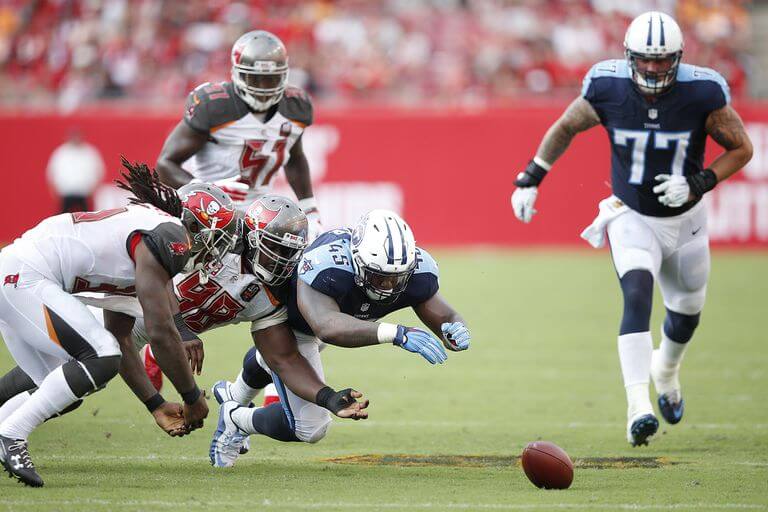
To deepen your understanding of memorable turnovers in football history, delve into the section on examples and case studies. Learn about the pivotal moments that have defined games and players alike. Discover the impact these turnovers have had on the outcome of matches and the legacies of those involved.
Memorable Turnovers in Football History
The Immaculate Reception is a miracle that happened on the football field. It’s one of the most unforgettable turnovers in history! Other remarkable plays include the Butt Fumble and the Music City Miracle, each leaving fans on the edge of their seats.
But there’s another turnover moment that deserves recognition. During Super Bowl XLIX, the New England Patriots faced the Seattle Seahawks. With just seconds remaining, Seahawks quarterback Russell Wilson attempted a pass from the one-yard line. Malcolm Butler of the Patriots intercepted the ball, giving the Patriots the victory.
This interception showcases how even small mistakes can have monumental consequences. To avoid becoming part of football folklore for the wrong reasons, teams must prioritize ball security. Coaches should emphasize proper techniques, like holding the ball tightly. Practicing situational awareness and decision-making under pressure can help players make smarter choices when facing potential turnovers.
By learning from past mistakes and following effective strategies, teams can reduce the possibility of being on the wrong end of memorable turnovers. Preventing turnovers is crucial for success on the field. It’ll secure a spot in history as champions, not victims of blunders!
The Immaculate Reception
The Immaculate Reception is legendary in American football. It happened during the 1972 AFC Divisional playoff game between the Pittsburgh Steelers and Oakland Raiders.
Terry Bradshaw of the Steelers threw a pass in the last seconds. It ricocheted off a Raiders player and was caught by Franco Harris, who ran it to the end zone for a touchdown. It was controversial ’cause nobody knew if the ball had hit the ground before being caught.
Details of the play:
| Team | Player 1 | Player 2 | Result |
|---|---|---|---|
| Steelers | Terry Bradshaw | Franco Harris | Touchdown |
This play was a major turning point for the Pittsburgh Steelers. Before this, they’d been one of the worst teams in football. But with this incredible moment, they became one of the best.
The Immaculate Reception still sparks debate. Fans and analysts still discuss if the ball had hit the ground.
The Ed Reed Interception Return
Ed Reed’s interception return astounded spectators and professionals alike. Here are the key details of this memorable feat!
| Player | Ed Reed |
| Team | Baltimore Ravens |
| Date | January 3, 2009 |
| Opponent | Miami Dolphins |
On that day, Ed Reed’s interception return was nothing short of incredible.
Pro Tip: This play serves as a testament to the fact that a single moment can completely alter the outcome of a game. For instance, the ‘Helmet Catch’ in the Super Bowl was a testament to the precision of the quarterback’s arm and the stickiness of the helmet!
The “Helmet Catch” Super Bowl Play
The unforgettable “Helmet Catch” Super Bowl Play stunned football fans everywhere with its remarkable display of athleticism and skill. This iconic moment in sports history will forever be remembered for its stunning execution and influence on the game’s outcome.
A more detailed look at the facts and figures of this play further highlights its importance. The table below offers an extensive breakdown:
| Details | |
|---|---|
| Player | David Tyree |
| Teams | New York Giants vs. New England Patriots |
| Super Bowl | XLII |
| Date | February 3, 2008 |
| Location | University of Phoenix Stadium, Glendale, Arizona |
This extraordinary catch featured David Tyree, a wide receiver for the New York Giants, who managed to catch the ball on his helmet while being tightly guarded by Rodney Harrison of the New England Patriots. This unexpected move enabled the Giants to keep possession and eventually win Super Bowl XLII.
The “Helmet Catch” Super Bowl Play has left a legacy that continues to captivate football fans today. It symbolizes the drive and resilience necessary to accomplish greatness in the face of intense competition. This remarkable moment serves as a reminder that anything is achievable in sports, and it continues to motivate athletes worldwide.
Conclusion: Just remember, life is a case study that unceasingly provides us with examples of how things can unexpectedly turn out well.
Frequently Asked Questions
Q: What is a turnover in football?
A: A turnover in football refers to a change in possession when the team on offense loses control of the ball to the opposing team.
Q: What are different types of turnovers in football?
A: There are several types of turnovers in football, including fumbles, interceptions, failed fourth-down conversions, and blocked kicks.
Q: What happens when there is a turnover in football?
A: When there is a turnover in football, the opposing team gains control of the ball and becomes the offensive team.
Q: Can turnovers impact the outcome of a football game?
A: Yes, turnovers can have a significant impact on the outcome of a football game, as they can lead to scoring opportunities for the opposing team.
Q: How can football teams minimize turnovers?
A: Football teams can minimize turnovers by practicing good ball security, having strong quarterback play, and minimizing penalties.
Q: Do turnovers only occur on offense in football?
A: No, turnovers can occur on both offense and defense in football, as the team with possession of the ball is susceptible to losing control or throwing interceptions to the opposing team.
Conclusion
Football is a fast-paced game. Turnovers occur when one team loses possession of the ball. It could be an interception, fumble, or fourth-down conversion. A turnover changes the momentum and gives the opposing team a chance to score or gain an advantage.
Turnovers are a reflection of strategy and execution. Coaches and players focus on minimizing them and capitalizing on their opponents’ mistakes. Ball security is a key part of the game that needs focus, skill, and discipline.
Turnover statistics track their occurrence during games. Teams with high turnover rates often don’t win as they lose possessions and scoring opportunities. Other factors like weather, fatigue, and defensive pressure can increase turnovers.
A true example of turnovers in football is Super Bowl XLIV between the Saints and Colts. Two interceptions from the Saints star cornerback Tracy Porter resulted in touchdowns and pushed them to victory.
Every possession counts in football. Turnovers can make or break a team. They demonstrate the importance of ball security and how one mistake can affect the outcome of a game. As fans, we look forward to these moments of uncertainty, knowing they can change an ordinary play into something amazing.


